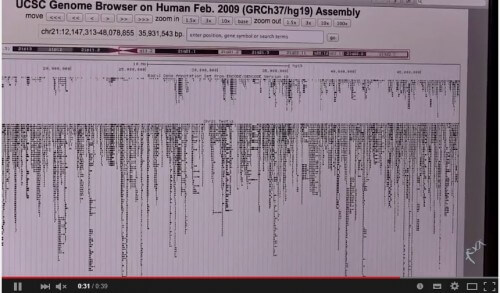A new gene sequencing technology called 'capture sequencing' allows us to scan the human genome at a much higher level of separation than ever before, giving birth to revolutionary applications in the fields of research and disease diagnosis.
The IATIA-Biomed 2015 conference will be held on May 12-14 at the fair center

[Translation by Dr. Nachmani Moshe]
A new gene sequencing technology known as 'capture sequencing' allows us to scan the human genome at a much higher level of separation than ever before, giving birth to revolutionary applications in the fields of research and disease diagnosis. Being a method that outperforms other existing methods, 'Capture Sequencing' ('Capture Sequencing', CaptureSeq) is able to accurately measure the activity of many defined genes within a sample - even when they are expressed in tiny amounts. The method is expected to give rise to immediate practical applications, including the diagnosis of blood cancer. The research findings have long been published by a team of Australian researchers in the scientific journal Nature Methods.
The researchers compared the method to other existing methods used to examine gene expression and found that it is much more sensitive to genes that are expressed at extremely low rates. The human genome consists of 20,000 genes - those DNA segments that are copied into RNA molecules and those in turn are translated into proteins that perform most of the tasks of the cells and the body. Genes that code for proteins make up only 2% of the total genome, and their number and function remains relatively constant among the creatures of the animal kingdom, from worms to humans. Today, researchers understand that the rest of the genome consists of genes that do not code for proteins, and that it is these genes that create the complexity and differentiate between humans and worms.
Non-protein coding genes are responsible for regulatory functions that occur during important stages of human and brain development. Most of them are expressed only in a few cells, and not in whole tissues, or they are expressed in low rates, so their research becomes particularly challenging. The new study shows us that the innovative method can help us in the discovery of these rare genes through the study of specific segments of the human genome with a much higher resolution than existing approaches of RNA sequencing. The method could also allow us to quickly detect diseases in which the diagnosis is based on gene expression, and these genes are recognized. The level of diagnosis of blood cancer of its types, for example, will immediately improve in light of the method's ability to detect the presence of a 'fusion gene'. A fusion gene (that is, two genes united into a common gene) is found in 20-30% of cancer cases. There are over 200 such known genes in blood cancer (leukemia) alone. Currently, patients suspected of having leukemia are tested using existing amplification-based technology, which is only able to look for one fusion gene at a time. Only rarely, if ever, will all 200 known genes be tested in these patients. The new method (CaptureSeq) is able to test all 200 known genes at once - which results in saving time and money, and ultimately also saving human lives. The method can also be used to test a variety of cancers and other diseases.
Article Summary
The news about the article

2 תגובות
I did not understand anything
There used to be a lot of talk about a "junk" genome, are they still talking about such a thing?
What percentage of the genome is currently considered to have no function? (ie no protein creation and no control)